General topics
Thai Stick Weed: Exploring Exotic Cannabis Delights!
Published
12 months agoon
By
admin
Table of Contents
What is a thai stick?
Thai Sticks are legendary cannabis products that originate from the Hill Tribes of Northeast Thailand. The traditional Thai Stick is crafted with a potent strain of cannabis called Asobinaka. The construction process involves impaling cannabis buds on a bamboo stick, then layering them with hash oil and wrapping them in cannabis leaves. This produces a uniquely concentrated form of cannabis, offering users a truly potent smoking experience.
Thai weed going global!
The popularity of Thai Sticks in the United States emerged during the Vietnam War, as soldiers discovered these potent cannabis products during their downtime. Upon returning home, the demand for Thai Sticks skyrocketed, resulting in thousands of kilos of weed and hash being smuggled into the U.S. However, as the supply of the key ingredient, the Asobinaka strain, dwindled, so did the demand for Thai Sticks. Today, the legacy of Thai Sticks continues, particularly in cannabis-friendly locations like Amsterdam. Adventurous individuals can even try crafting their own Thai Stick, Just don’t forget to take a picture and post it on Instagram, tag us so we can all see the result and enjoy the beauty.
What are cannabis cigars?
A Cannabis Cigar, also known as a Cannagar, is an enhanced smoking experience that utilizes hemp wick in place of tobacco. This natural and eco-friendly alternative is growing in popularity as more people seek healthier and more sustainable ways to consume cannabis. Essentially, a Cannabis Cigar dipped in hash oil is a contemporary interpretation of a Thai Stick, minus the bamboo skewer.
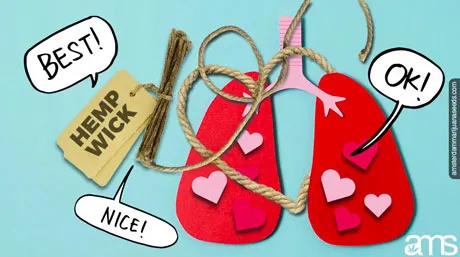
How to make thai sticks?
Creating your own Thai Stick requires certain materials including whole weed buds, cured cannabis leaves, bamboo skewers, hash oil, hemp wick, and parchment paper. After securing these items, you can start by coating your bamboo stick in hash oil to make the buds stick to it. Next, you’ll skewer your buds onto the stick and wrap them tightly with hemp wick for a uniform burn. Afterward, wrap the stick in parchment paper and freeze it for 24-48 hours. When it’s ready, carefully unwrap it, prepare your leaves, coat the buds with hash oil, and then wrap them with the leaves. The final steps involve wrapping the stick in parchment paper again and applying mild heat to seal everything together, and then wrapping the Thai Stick in hemp cord and curing it.
Hash oil
This is the main ingredient; you can make it yourself! Another process you must follow involves dissolving the weed in a solvent and filtering it.
We will add a link to a “How To” soon, so we can guide you through this step by step. Caution is advised due to the flammability of the solvent. It would be best if you didn’t burn anything but a blunt 😉
With a bit of luck and the right connections, you might be able to purchase it.
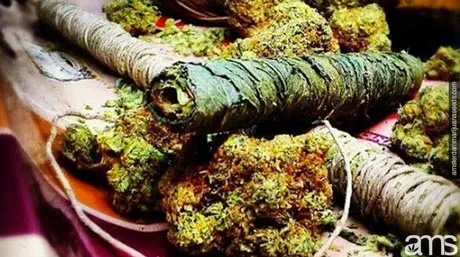
How to put your thai stick blunt together
You will begin to construct your Thai Stick following the procedure in the images below:

- to start, you will need to gather all of your materials.
- Next, you must coat your bamboo stick in hash oil. This will allow the bud to stick to the skewer while you finish the process.
- You will then skewer your buds on the Stick, being careful, and leave 1 cm at each end of the skewer. Being careful not to break off any buds, tie your hemp cord to one end of the Stick and start to shape them evenly while wrapping them tightly – this produces an even burn throughout the Thai Stick.
- Wrap the Stick in your parchment paper and put it in the freezer for 24-48 hours. Some people will choose to leave it for an extra day, but it should not stay for more than 3 days.
- Take the skewered buds from the freezer and carefully unwrap the parchment. Remove the string at this point – taking extra caution not to break any off the Stick.
– Once the string is off, prepare your prepared leaves.
– You will want to prepare your leaves by washing them and letting them dry ahead of time. - Now, you want to begin wrapping the Stick with your fresh cannabis leaves.
– Coat the buds with hash oil.
– Carefully wrap the buds with the cannabis leaves.
– You will want to do this three times, so your Stick is wrapped up in three layers of leaves. - Wrapping the Stick in parchment paper again and heat it lightly in a pan or hot plate. This will cause the hash oil to melt and seal everything together. Be Careful! DO NOT BURN IT!
- Remove the paper and gently wrap the Thai Stick in the cord again.
- Wrap it in the paper again in preparation for curing.
How to cure your thai stick
Thai Sticks can be cured using two methods – an earth-based method or a modern method.
- The earth-based method involves burying your Thai Sticks in a plastic bag in the earth for several weeks.
- Alternatively, the modern method requires placing your Thai Sticks in a plastic bag and refrigerating it for 3-4 days.
Each method has its own advantages and potential drawbacks, such as the possibility of mold growth or the required waiting period.
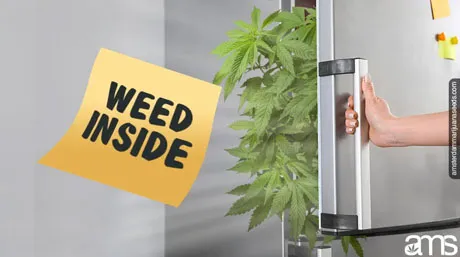
Why would you want to do this? There are a couple of reasons:
Firstly, due to a multitude of factors associated with the earth-based method (plant material, confinement in a non-breathable bag, temperature variations, etc.), your Thai Stick is at risk of mold development. Considering the investment of time, money, and effort that has gone into this project, the last thing you would want is for it to be compromised by mold.
Secondly, the question of patience comes into play – would you prefer to wait several weeks to enjoy your Thai Stick blunt, when you could potentially have it ready in merely 3-4 days with the modern curing process?
Smoking your thai stick
Smoking a Thai Stick is a straightforward process. You can smoke it in a pipe, or bong, or roll it into a joint. The key is to enjoy the experience, taking note of the powerful effects it can have. Thai Sticks are known for their slow burn and long-lasting effects, often burning for up to six hours. It’s important to smoke responsibly, ensuring that you’re in a safe, relaxed environment to fully enjoy the experience.
Thai sticks in a pipe
Thoroughly clean your pipe before packing Thai Sticks into the bowl. Pack Thai Stick into the bowl and light it like any other cannabis product. Enjoy your Thai Stick!
Thai sticks in a bong
Thai Stick is perfect for smoking in a bong! The process is pretty simple, Fill your bong with water and Thai Stick. Light it and enjoy!
Thai stick in a joint
Thai Stick is perfect for smoking in a joint! Roll up the Thai Stick in some rolling paper and enjoy. No need to overthink it!

Regardless of how you choose to smoke it
It is important to take your time and enjoy it. It can be a heavy hit, so be careful and ensure you are in a safe and relaxed environment. We have seen too many tourists in our beloved Dam taking a good thug and getting smoked with the high and all the madness around them.
We recommend that you find a comfortable spot, a relaxed area with chill surroundings, sit back, light it up, and enjoy!

Thai sticks burn longer than normal joints.
It can burn up to 6 hours on average. You will want to remove the skewer from the center of your Stick. This will leave a hollow tube in the middle of the Stick, allowing good airflow and a path for the smoke to travel down. Thai Sticks burn slowly. Please make sure you enjoy it responsibly. You will not smoke the whole thing. It’s okay to rest but put the Stick in an ashtray. We do not want you to fall asleep with a lit one in your hand.

Frequently asked questions
How much do Thai sticks cost?
The price of Thai Sticks is contingent on the quantity and quality of the cannabis used in its production. Each Thai Stick contains approximately four to ten grams of cannabis. Given the current market rate of around $20 per gram, this situates the price range for a single Thai Stick between $75 to $200. A high-quality, premium strain of cannabis will elevate the price, whereas lower-grade cannabis will decrease it.
Are thai sticks still around?
Indeed, Thai Sticks continue to be available and have experienced a resurgence in popularity. Originally, Thai Sticks enjoyed a period of high demand but fell out of favor towards the end of the 1980s. However, in recent years, due to the progressive legalization of cannabis worldwide, Thai Sticks have regained prominence in the cannabis market.
How was a thai stick made?
The creation of a Thai Stick involves a meticulous process. It begins with skewering cannabis buds onto a stick, followed by compressing them firmly against it. Subsequently, the skewer, now laden with cannabis, is wrapped in leaves and then set to cure. The curing process typically involves refrigeration for a period of 3-4 days. After curing, the Thai Stick is ready for consumption.
How long does it take to make a thai stick?
The process of creating a Thai Stick, excluding the time for cannabis cultivation, traditionally takes approximately two weeks from start to finish. This includes the preparation, assembly, and curing stages.
Is thai stick a strain?
While there is a cannabis strain known as “Thai Stick” or “Thai Sticks,” it should be clarified that this is distinct from the original strain used in traditional Thai Sticks. The authentic Thai Stick was made using the Asobinaka strain, which is now extinct.
How old are thai sticks?
Thai Sticks are a type of cannabis “cigar” originating from Thailand. Unfortunately, due to the clandestine nature of their historical usage, precise data regarding their age is elusive. However, the intriguing history of Thai Sticks continues to be a subject of interest, particularly as cannabis gains more widespread acceptance.
Does thai stick get you high?
To answer this question, it’s important to distinguish between the Thai Stick strain and the Thai Stick product. The Thai Stick strain, with a THC content of around 15-20%, is potent enough to induce a substantial-high. The Thai Stick product, also referred to as a “Cannagar,” is a multi-layered, oil-infused cannabis “cigar” that delivers a profoundly intense high when smoked.
Where can i buy thai sticks?
Thai Sticks can generally be located at cannabis dispensaries. In Amsterdam, reputable establishments such as Coffeeshop De Kade and Cannacenter Best Friends are known to carry them occasionally. Being specialty items, the quality of Thai Sticks can differ substantially, which is why it’s suggested to consult customer reviews prior to committing to a purchase. It’s crucial to ensure that the Thai Stick you procure is composed of 100% Sativa strain. Although it might require some effort to find a superior-quality Thai Stick, the unique and satisfying smoking experience it offers makes the quest entirely worthwhile.
What is the difference between a thai stick and a cannabis cigar?
The primary distinction between a Thai Stick and a Cannabis Cigar pertains to the time and method of their construction. A Cannabis Cigar is essentially a joint that uses cannabis leaves in place of traditional rolling paper. Thai Sticks, on the other hand, involves skewering and compressing cannabis buds onto bamboo sticks, which are then bound by hemp string and dipped in oil.
Are thai sticks made from an indica or sativa strain?
Historically, Thai Sticks have been produced exclusively using pure Sativa strains of cannabis.
You may like
-


Cannabis Consumers Are Being Hit By The Tariffs
-


The Best Tips To Update Your Wardrobe
-


Former New York Knick Iman Shumpert debuts ‘TSA Approved’ legal cannabis brand
-


How New York pot pioneers made it to legal dispensary shelves
-


Scientists Now Think That One Compound in the Cannabis Plant Can Replace All Opiates
-


Vladimir Bautista is leading Happy Munkey’s legacy-to-legal takeover
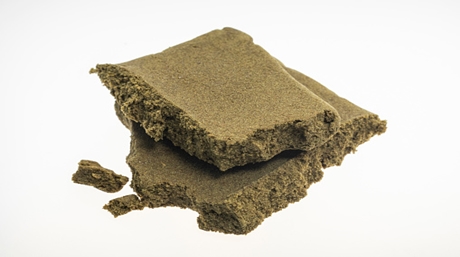
Many people often wonder how they can make cannabis hashish. Popularly shortened to hash, it is an Arabic name that means grass. Over countless years, this concentrate from the cannabis plant has been utilized by many cultures for its beneficial properties.
Today, the growing curiosity about how to make cannabis hash prompts us to come up with an ultimate guide on how the process can be done in a straightforward manner.
Producing hash requires separating cannabis bud trichomes from the other plant parts. In female cannabis plants, there are frosty white hairy-like structures. In this case, that’s what we refer to as trichomes. These parts are highly abundant in THC, which is why they are the most desired part of the plant. Remember that to come up with viable hashish, you must extract substantial amounts of THC.
Kief vs. hashish
Hashish doesn’t come merely from the separation of trichomes. The important factor at this point is kief. Kief is the raw material that aids in the production of hashish. When heat and pressure are applied to kief, hashish comes into existence.
Making kief into hash
From kief, it’s easy to come up with hash. There are two ways in which one can complete the process:
• Pollen pressing
• The heat and pressure method.
The pollen processing method
Pollen Processing involves placing kief in a press. Next, you apply firm pressure to make it moldable. By applying direct pressure to the kief, you will create a basic hash (really a kief puck). This method makes it easier to come up with a puck of hash.
However, this method has disadvantages. The flavors do not get a chance to develop, as there is no heat used in the process. The heat assists in developing and maintaining the flavors of the hash in its finished form. Heating and applying pressure to kief gives you a higher-quality hash.
The heat and pressure method
You can use the puck that you created above, or you can use cellophane to wrap kief and use a rolling pin to apply pressure and create a puck. Just keep gently applying pressure until the kief is at the density and shape that you want. You can continue to do this as long as you want. You can also let it sit for a day or two so that all of the flavors meld together. When you are ready, remove the cellophane.
Once you have created a kief puck using a pollen press, to do the heat and pressure method, you will need to gently heat the kief. You will want to wrap the puck in a wet paper towel. You will then wrap the kief in a wrap that can withstand being in a 93 – 137°C (200 – 280°F) oven. A good cooking parchment paper will be perfect for this application.
Place the parchment paper and its contents in an oven set somewhere between 93 – 137°C (200 – 280°F). Make sure that the contents do not spill out. Having a baking sheet handy would be very helpful here. Place the package in your oven for 5-10 minutes. Unwrap the package. Rewet your paper towel, re-press your puck using the method above, and then rewrap it in parchment paper. Place this in the oven again for 5-10 minutes. Repeat the process. You want to do this whole process at least three times. Let it cool overnight or by placing the product in your fridge or freezer.
The pressure and heat method will produce a superior hash.
Methods used in the production of hashish
There are other different methods used in coming up with hash. However, these ways give different potency levels.
It is also worth mentioning that different cannabis plants have different cannabinoid levels. That said, they can produce varied qualities of hash depending on the marijuana strain used. There are quite a few methods used to make cannabis hash. Nonetheless, we are going to give the three most used and cheap to try at home.
1. Finger production method
This could be described as the easiest method for producing hash. As one harvests ganja from the cannabis plants, there may be instances where it sticks to the palms and the fingers.
The method involves placing a can or jar and rubbing your hands and fingers together over the can so that it collects the parts of the buds that stick to your hands. This can then be used to produce hash by rubbing your hands together vigorously. The heat and pressure produced during rubbing aid in combining the mixture into hash. However, this type of hash is described as having low quality. There may also be contamination coming from sweat and dirt on your hands.
The obtained hash may have off-flavors and unpredictable effects, which is a negative.
2. Silkscreen
This method involves sieving cannabis trichomes through a silk screen. Depending on your preference, you can opt to make your silkscreen or purchase one. Either way, note that the cannabis plant parts must be trimmed into very tiny sizes through this screen.
That said, you also need to ensure that you see the trichomes and collect them painstakingly. The finer the silkscreens that you use, the higher the probability of coming up with finely produced hashish.
One can opt to use the remains to sieve them further. However, the kief obtained from the get-go usually has mostly potent hashish. Depending on the amount of hash needed, a single silkscreen is under most circumstances sufficient to come up with a substantial amount of hash.
3. Blender method
The blender method relies heavily on probability. The colder the trichomes, the easier it gets to separate them from the rest of the cannabis plant parts. Ice is a crucial ingredient in this method. Using this method involves mixing the cannabis plant matter, water, and ice into a blender.
Switching on the blender aids in separating the iced plant matter to get the trichomes. That becomes evident after switching off the blender. The trichomes sink, making it easy to obtain them promptly.
A sieve can then get used. The trichomes penetrate easily, which is why they pass through the sieve with water while the rest of the plant parts remain in the sieve.
Letting the trichomes and water mixture cool for 30 minutes afterward helps the trichomes form a layer at the bottom. However, one ought to be careful because slight disturbance to the trichomes can lead to unnecessary impurities. The trichomes layer can then get placed in a freezer for ten minutes.
In summary
Making hash is a sure way to make trichomes usable in a unique way. Now that you have the info necessary to come up with these concentrates, the ball is in your court.
The marijuana strains you use to extract the trichomes play an essential role in the overall effects obtained after using hashish. The better the strain you use, the better your hash will be.
Follow the method of your choice and enjoy your hash to the fullest!
General topics
How To Make Hash Or Hashish, Expert Tips!
Published
4 months agoon
December 14, 2024By
admin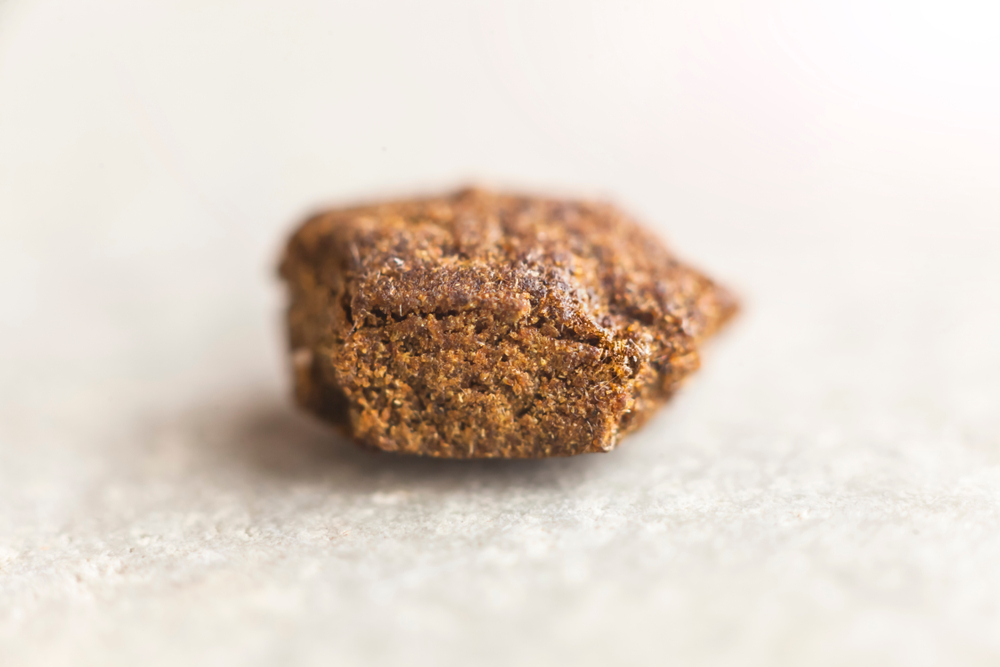
Hashish is a cannabis concentrate. It is wonderful stuff that you can crumble and put in a joint or smoke in a bowl. You can buy it from a dealer, but did you know that you can also make it relatively easily yourself? You don’t need that much at all. There is even a method that requires no tools at all, just your hands! Read on and make your own hash! In this article we’ll discuss two methods, namely making hash using a sieve and making hash using a blender.

Make hashish with a sieve
There are different ways to make hashish. For example, you can roll your plant material under your hands. Because you press hard and roll, the trichomes stick to your hands. A sticky layer will remain on your hands, and if you carefully scrape it off, you will have hash!
Rolling is a simple method because you don’t need anything for it. Well, of course, you need plant material. You can use stems, leaves, and flower tops for it. In fact, everything that remains after harvesting still has trichomes. There are trichomes on almost all parts of a weed plant. Sometimes there aren’t that many, but by rolling everything under your hands, enough sticks. Suppose you don’t like this method, for example, because you don’t want to get your hands dirty, there are many more ways to make hash. So read on, and discover other ways that might be of interest to you. Keep in mind that every way to make hash produces a different kind of hash. A certain method influences the structure, for example, the hash may end up being a bit dry or very sticky. And how strong the hashish is can differ. But that is just the fun. With every method you use, the end product is about the same, since it falls into the hashish category. Yet there are differences in the final product that make it interesting again. Certainly, if you make it yourself, you can vary nicely. That way you learn what you like best. Anyway, we want to teach you a method here that is very simple. The only thing you need for it is a sieve. This method is also called ‘flat screening’. Use a strainer that you can easily hold in your hand, the smaller the holes, the better and purer your final product will be. We assume that you are looking for quality, not quantity!
It is best to first put your weed in the freezer for a while. That will help to get the trichomes off your weed plant better. When you have done that, remove the plant material from the freezer. Make sure you have a clean work table or surface. Put the plant material on the sieve and rub it very carefully back and forth. By rubbing the plant material remains on the sieve and the trichomes fall through the fine holes of the sieve. The trichomes fall on the surface under the sieve. Continue to sift for a while, until no more trichomes fall and the plant material is ‘finished’.
Making hashish in a blender
Of all the ways to make hashish, this is perhaps the coolest. And it is not only very fun to do, but it is also very simple. You probably have all the materials for this method at home. You need a blender and a strainer (sieve) for it. Are you ready to make your own fresh, wonderfully smelling, homemade hashish? Here we go!
Put all the cutting residues that you have left after pruning or harvesting in a blender. Now fill the blender with water so that all the plant material is just covered with water. Wait, don’t start mixing right away. We appreciate your enthusiasm! But ice must first be added. Fill the blender completely with ice. Now it’s time to mix. First do it a bit quietly, so that the ice can crush, and then turn the blender knob all the way to high-speed mode, and mix for a minute at the highest setting. You now get a kind of green soup, a bit of a slimy mixture. Now take the sieve and keep it above a jug or a pot. Pour the green mixture through the sieve into the jug and let it rest for about an hour. You now see something very nice happening: the trichomes form on the bottom. If you want to see this, you must take a glass can. Then you can see it all happen. Now comes a precise job, which you have to handle carefully. Drain part of the water, but watch out, make sure you don’t wash away the trichomes because you want them! Now fill the pot again with very cold water and let it rest for 10 minutes. Drain part of the water again and be careful not to wash away the trichomes. You have to be patient now, and not make it easy for yourself. Just wait and restrain yourself for a moment! For good quality hashish, you have to repeat this process about 6 times.
We will now make real hashish
Did you do all this? Beautiful! Then we will now make real hashish. Start by carefully draining as much water as possible from the jug (or pot, depending on what you use). So don’t rinse the trichomes away, otherwise, you can start over again, and you will have better things to do! Now grab a filter. A coffee filter works best. Carefully pour the solution left in the jug through the coffee filter. Now all the water is washed away and a sticky mass remains in the filter. Tadaaa, there is your homemade hash! Congratulations! First, gently squeeze the filter to remove even more water, pressing the hashish slightly. You can now let it dry and then smoke it in a bowl or joint, just what you like best. It is not necessary to first heat the hash or compress it even further. Enjoy!
Cannabis FAQ
Expert Lighting Tips For Successful Indoor Growing Weed
Published
4 months agoon
November 22, 2024By
admin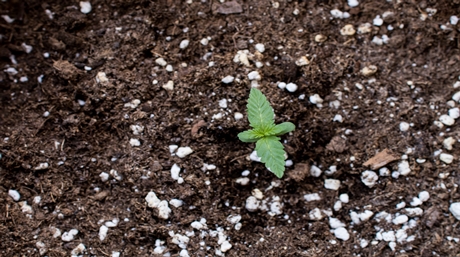
Cultivating Your Green Haven Year-Round
As the cold weather approaches and outdoor growers retreat indoors to continue their cultivation throughout the winter, the importance of choosing the right lighting for indoor growing becomes paramount. With a myriad of illumination options available, it’s easy to feel overwhelmed. But fear not, for we are here to guide you through the process, helping you create a thriving indoor garden that will yield bountiful results throughout the year.
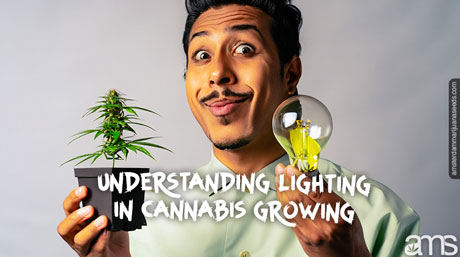
Illuminate the Path to Successful Indoor Growing Weed
When it comes to indoor cultivation, lighting is undeniably one of the most crucial factors to consider. Not only does lighting play a vital role in manipulating the natural light cycles of marijuana plants, but it also serves as, the catalyst for photosynthesis—the process by which plants create their own, nourishment. Within the leaves of cannabis plants, chlorophyll acts as a light-absorbing pigment, harnessing light energy to convert water and carbon dioxide into food sugar.
The process of photosynthesis is directly influenced by the color, duration, and intensity of light received by the plant. By strategically altering these factors, you have the power to impact your plant’s food production. Cool blue and warm orange are examples of illumination colors that enhance a plant’s ability to generate sustenance. During the summer months, cool light is most beneficial, promoting dense and well-shaped growth. In contrast, warm-colored light during the fall harvest months induces the development of vibrant flowers. In essence, cool colors stimulate growth, while warm colors act as catalysts for flowering.
Embracing Darkness: The Role of Light Cycles
Beyond light color, the duration of light exposure your cannabis plant receives is of utmost importance. By adhering to specific light cycles, you can ensure optimal growth and flowering. During the growth phase, it is recommended to provide your young plants with 18 hours of light and 6 hours of uninterrupted darkness. This extended period of light exposure fuels vigorous vegetative growth. However, once the plant is ready to flower, adjusting the light cycle to 12 hours of light and 12 hours of darkness triggers the flowering process.
The flexibility of indoor cultivation allows you to customize the light cycle based on your preferences and the needs of your plants. This is especially beneficial during the winter months when maintaining a consistent temperature is challenging. By utilizing the ability to leave the lights on during the night and off during the day, you can create a more stable environment, minimizing temperature fluctuations and providing a nurturing space for your plants.
Choosing the Right Lamps: Illuminating Your Indoor Oasis
Selecting the appropriate lamps for your indoor grow room requires careful consideration of various factors. Firstly, assess the amount of light intensity required for your plants’ growth stage. Secondly, consider the size of your grow room, as this will determine the number and placement of lamps needed. It is essential to evaluate the electrical capabilities of the room to ensure that the chosen lamps can be adequately powered. Additionally, contemplate the preferred light color that aligns with the specific growth stage and desired outcomes. Lastly, establish a budget and compare the prices of different illumination options, keeping in mind that lighting systems are long-term investments that can incur higher costs due to their power consumption.
Fluorescent lamps with a broad color spectrum are particularly beneficial for seedlings that have not yet developed large leaves. These lamps provide ample light and support the initial stages of growth.
Indoor growers seeking maximum intensity per watt would benefit from high-pressure sodium lamps (HPS). Known for their efficiency and cost-effectiveness, HPS lamps emit a warm orange glow, which triggers plant hormones that facilitate bud development and flowering. While HPS lamps excel at providing warm light, they are less proficient in emitting cool blue light. Consequently, they are best suited for the flowering stage of growth. If you were to use an HPS bulb for seedlings, it is advisable to keep the lamps at a lower height (approximately 80 cm/31.50 inches) to encourage rapid horizontal growth. Early pruning can also help control plant height and prevent excessive stretching.
On the other hand, metal halide lamps (MH) are highly efficient and serve as an excellent primary light source for indoor growers. Emitting one of the brightest cool lights available, MH lamps are ideal for promoting foliage growth and cultivating robust plants. With an average lifespan of 10,000 hours, MH lamps retain their glow for an extended period. However, it is important to note that over time, the energy they emit within the blue range diminishes. Therefore, regular assessment and potential replacement of MH lamps are necessary to maintain optimal illumination conditions.
Expert Tips for Successful Indoor Growing Weed
To ensure the success of your indoor cultivation journey, consider the following tips:
- Maintain Adequate Distance: Pay close attention to the proximity of your plants to the light source. If the lamps are too close, they may cause light burn and damage your precious foliage. Strive to maintain a safe distance between the lamps and plants to avoid such undesirable outcomes.
- Achieve Balance: Provide all your plants with a consistent and equal amount of light. Avoid overcrowding, as taller plants may overshadow their smaller counterparts, depriving them of much-needed light. To overcome this challenge, consider using bins or adjustable platforms to elevate smaller plants closer to the light source, ensuring equitable light distribution.
- Cultivate a Year-Round Bliss: Embrace the advantages of indoor cultivation, relishing a year-round supply of your favorite buds. Although setting up your indoor oasis may seem initially daunting, the rewards will be reaped one bud at a time. With careful attention to illumination, you can create an optimal environment for your plants to thrive regardless of the season.
In conclusion, selecting the ideal illumination system for indoor growing is a decision that warrants thoughtful consideration. By understanding the profound impact of light color, cycle duration, and intensity on your plants, you can make informed choices that maximize yield potential. Whether you opt for fluorescent lamps, high-pressure sodium lamps (HPS), or metal halide lamps (MH), remember to strike a balance and provide optimal conditions for your plants to thrive. Embrace the joys of indoor cultivation and revel in the delights of a bountiful harvest, regardless of the season.

Cannabis Consumers Are Being Hit By The Tariffs

The Best Tips To Update Your Wardrobe

Former New York Knick Iman Shumpert debuts ‘TSA Approved’ legal cannabis brand

How New York pot pioneers made it to legal dispensary shelves

Scientists Now Think That One Compound in the Cannabis Plant Can Replace All Opiates

Vladimir Bautista is leading Happy Munkey’s legacy-to-legal takeover

Cannabis Can Help A Sore Throat

Cannabis and the Authoritarian State

As cannabis consumer tastes evolve, industry must look beyond potency

Article: Early 2025 Empire State Psychedelic Policy Roundup

Distressed Cannabis Business Takeaways – Canna Law Blog™

United States: Alex Malyshev And Melinda Fellner Discuss The Intersection Of Tax And Cannabis In New Video Series – Part VI: Licensing (Video)

What you Need to Know

Drug Testing for Marijuana – The Joint Blog

NCIA Write About Their Equity Scholarship Program

It has been a wild news week – here’s how CBD and weed can help you relax

Cannabis, alcohol firm SNDL loses CA$372.4 million in 2022

A new April 20 cannabis contest includes a $40,000 purse

Your Go-To Source for Cannabis Logos and Designs

UArizona launches online cannabis compliance online course
Trending
-

 Cannabis News2 years ago
Cannabis News2 years agoDistressed Cannabis Business Takeaways – Canna Law Blog™
-

 One-Hit Wonders2 years ago
One-Hit Wonders2 years agoUnited States: Alex Malyshev And Melinda Fellner Discuss The Intersection Of Tax And Cannabis In New Video Series – Part VI: Licensing (Video)
-

 Cannabis 1012 years ago
Cannabis 1012 years agoWhat you Need to Know
-

 drug testing1 year ago
drug testing1 year agoDrug Testing for Marijuana – The Joint Blog
-

 Education2 years ago
Education2 years agoNCIA Write About Their Equity Scholarship Program
-

 Cannabis2 years ago
Cannabis2 years agoIt has been a wild news week – here’s how CBD and weed can help you relax
-

 Marijuana Business Daily2 years ago
Marijuana Business Daily2 years agoCannabis, alcohol firm SNDL loses CA$372.4 million in 2022
-

 California2 years ago
California2 years agoA new April 20 cannabis contest includes a $40,000 purse



